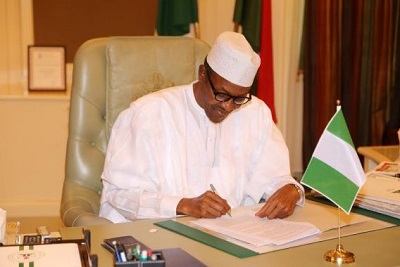
A maintenance seal and other details prove that a wing
part found on an Indian Ocean island belongs to missing Malaysia
Airlines Flight 370, the Malaysian transport minister has said.
Liow Tiong Lai said a maintenance seal on the
flaperon matches the airline’s records. It was a claim the Malaysian
prime minister made hours earlier but that other countries involved in
the investigation have shied away from making.
“From our first observation, the colour tone and all
maintenance records that we have, we know. Our records show that it’s
the same as MH370,” Mr Liow said. He said there are “many other
technical details that I do not have to reveal” but that confirm the
part is from MH370.
Malaysian prime minister Najib Razak announced early
on Thursday morning that the part, known as a flaperon, did indeed come
from the doomed aircraft, but authorities in France, the US and
Australia have stopped short of full confirmation.
The conflicting comments infuriated many families of
those on board the plane, who have waited more than 500 days for
concrete clues into the fates of their loved ones.
Dai Shuqin, the sister of one of the passengers, was
among about a dozen Chinese relatives who held a demonstration outside
Malaysia Airlines’ offices in Beijing.
“France is being cautious about it, but Malaysia is
desperate to put an end to this case and run away from all
responsibilities,” she said.
Mr Liow said differences with other countries amounted to “a choice of words”.
“They want to continue with additional tests. We respect their decision,” Mr Liow said of the French.
He also said more apparent plane debris has been
found on Reunion Island and sent to local authorities for French
investigators to examine.
Mr Liow added that a Malaysian team found the
objects, including a window and some aluminium foil, but the minister’s
press secretary later it was “window material” rather than a window that
was recovered.
“I can only ascertain that it’s plane debris,” Mr Liow said. “I cannot confirm that it’s from MH370.”
The disappearance of the Boeing 777 jetliner while on
a flight from Kuala Lumpur to Beijing on March 8th, 2014, has been one
of the biggest mysteries in aviation history. Officials believe it
crashed in the southern Indian Ocean, killing all 239 people on board,
but the wreckage and the cause remain elusive.
“It is with a very heavy heart that I must tell you
that an international team of experts has conclusively confirmed that
the aircraft debris found on Reunion Island is indeed MH370,” Mr Najib.
The French territory is thousands of kilometres west of the area being
searched for wreckage from the flight.
But at a news conference in Paris, deputy prosecutor
Serge Mackowiak declined to confirm that the debris belonged to Flight
370, though he said there were strong indications that it did.
“The very strong conjectures are to be confirmed by
complementary analysis that will begin tomorrow morning,” Mr Mackowiak
said. “The experts are conducting their work as fast as they can in
order to give complete and reliable information as quickly as possible.”
The caution was typical of how France carries out air
crash investigations. The French agency that usually handles such
probes, known as the BEA, can take months if not years to lay out
exhaustive conclusions in reports that last hundreds of pages. During
the inquiries, they only rarely offer interim assessments and even more
rarely comment.
The Australian government, which leads the seabed
search for wreckage west of Australia, was also less certain than
Malaysia, saying only that “based on high probability, it is MH370”.
Publicly, Australian officials withheld criticism of
Mr Najib’s announcement, with Australian transport minister Warren Truss
saying Australia respected Malaysia’s right to make that call, given it
is the government in charge of the investigation.
“Of course there is still some i’s not dotted and t’s not crossed. There is still a very small element of doubt,” Mr Truss said.
Privately, however, there were questions about why Mr
Najib had moved forward with the statement before all countries had
agreed.
An Australian government official said Malaysia was
not supposed to make the announcement, and had gone out on its own
making a conclusive statement before getting the evidence to back it up.
Many families of those on board, who have waited nearly 17 months for tangible evidence, were fed up with the mixed messages.
“Why the hell do you have one confirm and one not?”
said Sara Weeks, the sister of New Zealander Paul Weeks, who was on
board. “Why not wait and get everybody on the same page so the families
don’t need to go through this turmoil?”
Ross Tapsell, a Malaysia expert at the Australian
National University, said he suspects Mr Najib was trying to distract
Malaysians from a corruption scandal. On Monday, Malaysia’s
anti-corruption agency said that 700 million dollars in Mr Najib’s
personal bank accounts came from donations, not from a debt-ridden state
investment fund.
“He’s under so much political pressure at the
moment,” Mr Tapsell said. “I presume if he can try to move the
conversation back to the MH370 stuff, it’s in his interests to do so.”
Mr Najib would also want to stamp his authority on
the search, which Malaysia oversees, Mr Tapsell said, rather than allow
France to dominate attention through its leading role in examining the
wing fragment.
A US official said the flaperon clearly is from a
Boeing 777. But a team of experts in France examining the part had not
yet been able to find anything linking it specifically to the missing
plane, the official added.
With no other 777s or flaperons known to be missing,
it makes sense that the part comes from Flight 370, but the US and
Boeing team members are merely trying “to be precise”, the official
said.
Australia, which sent an official to France to help
examine the flaperon, has said the find will not affect its sonar search
of a 120,000-square kilometer (46,000-square mile) expanse of seabed
more than 4,000 kilometers (2,500 miles) east of Reunion Island.
That search, which began in October, has covered almost half that area without finding any clues.
Australian prime minister Tony Abbott told Melbourne
Radio 3AW that the apparent discovery of MH370 wreckage “does seem very
consistent with the search pattern that we’ve been using for the last
few months”. “Let’s hope we can turn something up,” he said.
Intact and encrusted with barnacles, the flaperon was
found on a beach and sent to France for scrutiny by the BEA and members
from its Malaysian and Australian counterparts.
Analysts say investigators will examine the metal
with high-powered microscopes to gain insight into what caused the plane
to go down. But it will not fully solve the mystery of why the plane
disappeared, nor will it help pinpoint where the plane crashed.
It is not known why Flight 370 — less than an hour
into its journey — turned back from its original flight path and headed
in an opposite direction before turning left and flying south over the
Indian Ocean for hours.
A six-week air and sea search covering 4.6 million
square kilometres (1.8 million square miles) of the southern Indian
Ocean surface last year failed to find any trace of the jetliner. The
Reunion Island debris would support the working theory that the jet went
down in the Indian Ocean and the debris was carried by the current.
Malaysian officials have said the plane’s movements
were consistent with deliberate actions by someone on the plane,
suggesting someone in the cockpit intentionally flew the aircraft off
course.
Since last year, Australian officials who are leading
the search effort have operated on the theory that the plane flew on
autopilot for hours before running out of fuel and crashing into the
ocean. Investigators settled on that scenario after analysing data
exchanged between the plane and a satellite, which showed the jetliner
took a straight path across the ocean.






 It was a rare mix of personalities at the Federal Palace, Victoria
Island, Lagos, on Saturday, as daughter of millionaire Femi Otedola, DJ
Cuppy, kicked off her concert of 8-country tour in Lagos.
It was a rare mix of personalities at the Federal Palace, Victoria
Island, Lagos, on Saturday, as daughter of millionaire Femi Otedola, DJ
Cuppy, kicked off her concert of 8-country tour in Lagos.


 Lionel Messi uncharacteristically lost his cool in a Joan Gamper
Trophy match on Wednesday night. His Barcelona side defeated Roma 3-0 in
front of their home fans at Camp Nou, but the preseason "friendly" was
overshadowed by Messi's altercation with Roma defender Mapou
Yanga-Mbiwa.
Lionel Messi uncharacteristically lost his cool in a Joan Gamper
Trophy match on Wednesday night. His Barcelona side defeated Roma 3-0 in
front of their home fans at Camp Nou, but the preseason "friendly" was
overshadowed by Messi's altercation with Roma defender Mapou
Yanga-Mbiwa.





















 Melinda Gates is wife to the richest man in the world, Bill Gates.
She was pictured yesterday washing plates in a village in Malawi.
Melinda Gates is wife to the richest man in the world, Bill Gates.
She was pictured yesterday washing plates in a village in Malawi.










